The New Rules of Protein: 11 Unexpected Plant-Based Powerhouses for Muscle Mastery
Protein needs change as we get older. Muscles become more sensitive to nutrition and activity, and how we distribute protein across the day matters more than ever. For many people, switching to mostly plant-based foods raises questions: can plants supply the amino acids that support muscle maintenance? The short answer is yes—especially when you know which plant foods to reach for and how to combine them. This article focuses on surprising, practical choices that fit into everyday life while being gentle on digestion and easy to prepare. We'll highlight options that are both protein-rich and senior-friendly, along with simple cooking tips, pairing ideas, and reasons each food can be helpful for muscle upkeep. We won't promise quick fixes. Instead, we'll offer realistic steps you can try at breakfast, lunch, and dinner to deliver steady, reliable protein. If you want exact protein numbers or leucine details, check USDA nutrition labels or ask a registered dietitian; they can provide precise amounts tailored to your health needs and medications. For now, think of this list as a toolkit: small swaps, tasty additions, and texture-friendly approaches that make meeting daily protein goals more achievable. Each choice below includes easy ways to cook, combine, or soften the food so it works for different appetites and chewing abilities. Keep an open mind—some of these might become your new staples for stronger, steadier days.
1. Tempeh: Fermented soy with a firm, satisfying bite

Tempeh is a fermented soy product that often surprises people who expect only tofu from soy. Fermentation breaks down some of the complex components in soy, which can help make tempeh gentler on digestion for some older adults. It has a firm texture and nutty taste, so it holds up well when pan-seared, baked, or added to stews. For people who prefer softer textures, thinly sliced tempeh can be simmered in broth until tender or crumbled and mixed into sauces. Tempeh also soaks up marinades and flavors quickly, which helps if appetite or taste sensitivity has changed. A practical tip is to slice tempeh thin and toss it with colorful roasted vegetables and a grain to make a balanced bowl. Because it's a concentrated plant-protein whole food, tempeh can play the role of a main protein at a meal without a lot of extra preparation. If you use tempeh for the first time, try a simple pan-sear with a splash of soy or tamari and lemon to see how your digestion responds. As always, check ingredients if you have soy sensitivities, and discuss new foods with your care team if you have specific digestive or medication concerns.
2. Tofu: The chameleon of plant proteins
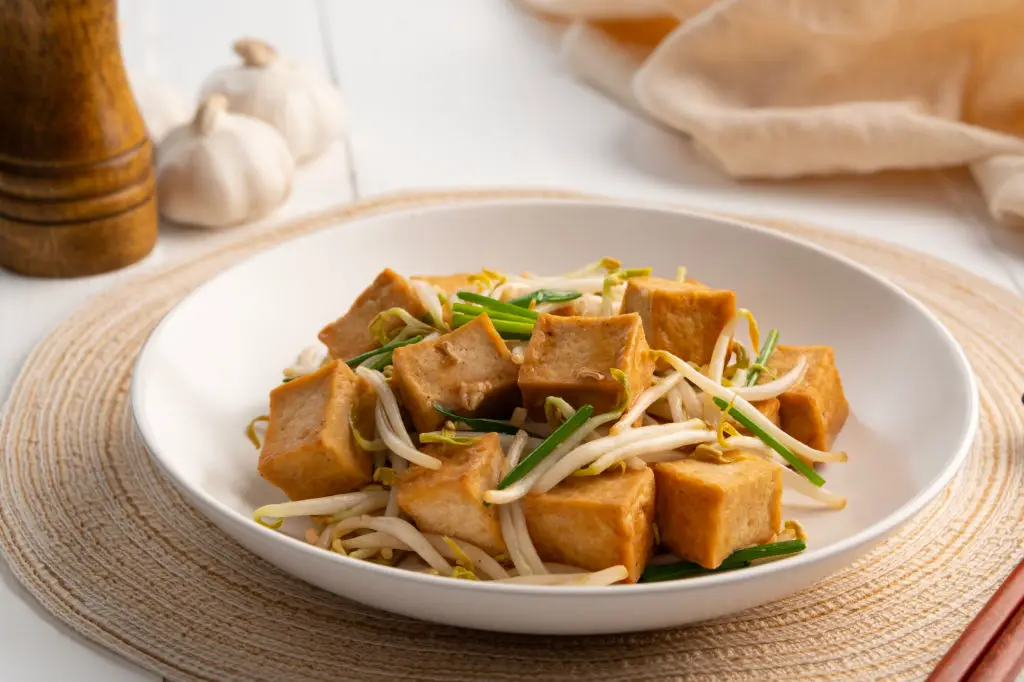
Tofu comes in textures from silken to extra-firm, which makes it one of the most adaptable plant proteins for older adults. Silken tofu blends smoothly into smoothies, puddings, and creamy sauces—great when chewing or swallowing is a concern. Extra-firm tofu can be pressed, marinated, and baked or grilled for a sturdy, meaty component on the plate. Because tofu is mild, it readily absorbs herbs, spices, and sauces, helping meals stay interesting without needing complicated recipes. For easier digestion, try cubing and gently simmering tofu in a flavorful broth or folding crumbled soft tofu into warm soups for added protein with a soft texture. If sodium is a concern, rinse packaged tofu and choose low-sodium marinades. Tofu also pairs well with whole grains and vegetables to create balanced meals that support muscle health. For readers wondering about soy, most evidence supports soy foods as safe for most adults, but anyone with specific medical concerns should talk with a clinician or dietitian. Simple recipes—like a tofu and vegetable stir-fry or a silken tofu smoothie—make it straightforward to add high-quality plant protein across the day.
3. Edamame: Snackable pods that double as whole-food protein
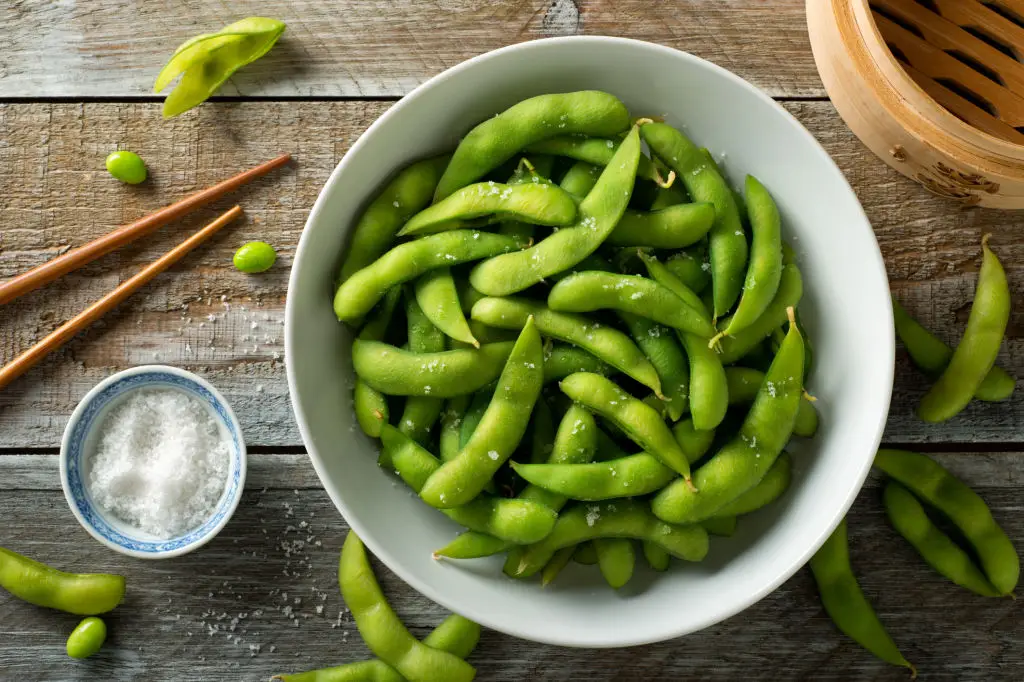
Edamame are young soybeans often sold frozen in their pods, and they offer the convenience of a ready-to-eat, whole-food protein. Shelled edamame softens quickly after steaming or boiling, making it easy to mash into spreads, fold into grain bowls, or stir into soups for a gentle, protein-rich boost. As a finger food, shelled edamame can be a satisfying, bite-sized way to increase protein across the day without heavy cooking. For older adults who prefer softer textures, lightly mashing cooked edamame with a fork or processing them into a smooth dip is an easy option. Because edamame are whole-foods, they also bring fiber and micronutrients alongside protein, supporting overall recovery and satiety. If you notice digestive sensitivity to beans, start with small portions and ensure they are well-cooked to reduce discomfort. Pair edamame with a small whole grain or leafy greens for a balanced plate that feeds both appetite and muscle needs. Keep frozen bags on hand—thawing and steaming takes only minutes, and the pods stay fresh longer than many perishable options.
4. Lentils: A fast, tender legume for comforting meals

Lentils are a legume that cooks faster than many beans and softens to a tender texture well suited to soups, stews, and purees. Because they break down easily, lentils are a good choice when chewing or digestive ease is a priority. They pair naturally with grains, vegetables, and herbs to make meals that supply complementary amino acids, which supports muscle protein needs when eaten consistently. A simple lentil soup or a mashed lentil spread served on whole-grain toast can be comforting and nourishing without heavy effort in the kitchen. If you experience bloating from legumes, try soaking lentils briefly or choose split red lentils, which tend to become very soft and are often easier to digest. Lentils are also budget-friendly and widely available year-round, making them a reliable pantry staple. To keep meals interesting, vary seasonings—from Mediterranean to curry-style—so lentils become a regular, enjoyable way to add plant protein into daily meals.
5. Chickpeas: Crunchy, creamy, and endlessly adaptable

Chickpeas show up in many forms: whole, roasted for a crunchy snack, or mashed into creamy hummus. That versatility makes them helpful for older adults with varying texture preferences. Pureed chickpeas in hummus are soft and easy to swallow, while roasted chickpeas provide a chewy snack if that texture is enjoyable. Chickpeas pair well with grains, seeds, and greens, helping to round out meals with a mix of carbohydrates, fiber, and protein. To ease digestion, soak dried chickpeas overnight and cook until very tender; canned chickpeas can be rinsed to reduce sodium and make them gentler on the stomach. Mixing chickpeas with a seed butter or tahini adds healthy fats and makes the spread more calorie-dense for those needing compact nutrition. If you have specific digestive or medication issues, discuss chickpea intake with your healthcare provider, but for many people, chickpeas are a dependable, tasty way to increase plant-protein servings with minimal fuss.
6. Quinoa: A seed that behaves like a complete grain

Quinoa cooks into fluffy, tender grains and is often described as one of the more complete plant proteins because it supplies a wider range of amino acids than most grains. That makes it a useful base when building muscle-friendly meals. Quinoa’s mild flavor and soft texture when cooked make it easy to eat and digest, and it mixes well with sautéed vegetables, beans, or crumbled tempeh for balanced plates. For older adults who prefer less chewing, quinoa can be combined with softer ingredients like roasted squash or pureed beans to create nourishing bowls and casseroles. Because quinoa cooks relatively quickly and keeps well in the fridge, it’s practical for meal prep—cook a batch and use it across several meals. If you're watching carbohydrate intake, portion quinoa alongside non-starchy vegetables to balance energy. Choosing pre-rinsed quinoa can save time and reduce the bitter coating some varieties have, which also makes it more palatable for sensitive taste buds.
7. Hemp Seeds: Tiny but nutrient-dense
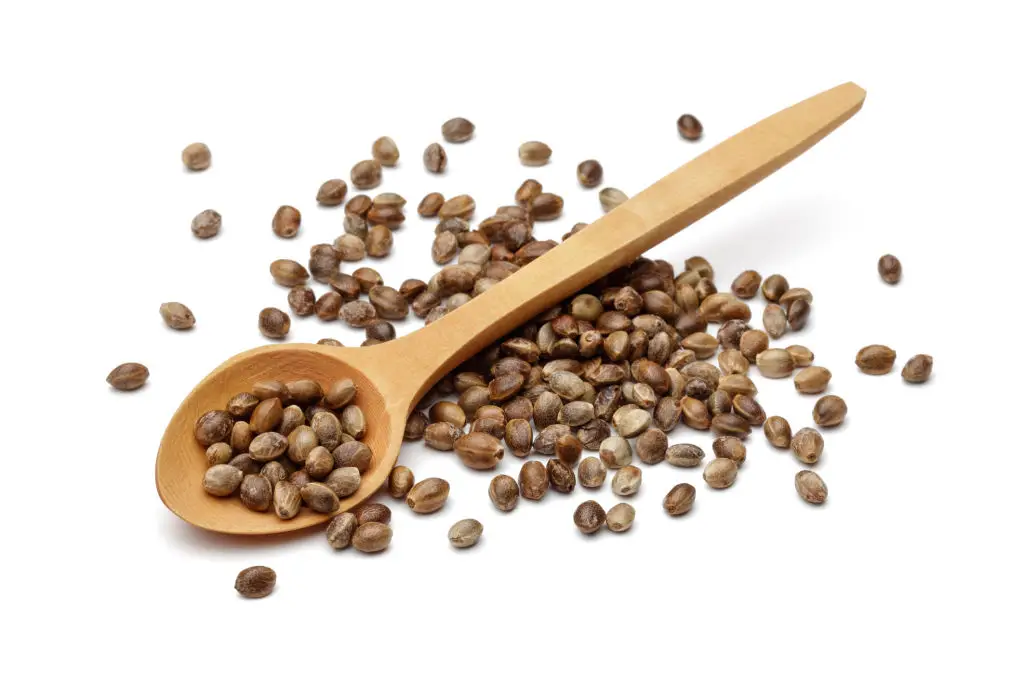
Hemp seeds are small, soft seeds with a mild, nutty flavor that blend easily into foods without needing chewing if you prefer smoother textures. They can be sprinkled on oatmeal, stirred into yogurt, or whisked into smoothies, instantly raising the plant-protein content of a meal or snack. Because they don’t require cooking, hemp seeds are convenient for quick protein boosts and for people who tire of long prep times. Hemp also brings healthy fats that help with recovery and overall caloric needs, which can be helpful for older adults who need compact, nourishing bites. For variety, mix hemp seeds with ground flax or chia in a breakfast bowl to add texture and nutrients. If you’re new to seeds, start with a tablespoon and increase as you like; seeds add richness without taking up much space on the plate, making them an easy strategy to tinker with over time.
8. Pumpkin Seeds: A crunchy source of plant protein and minerals
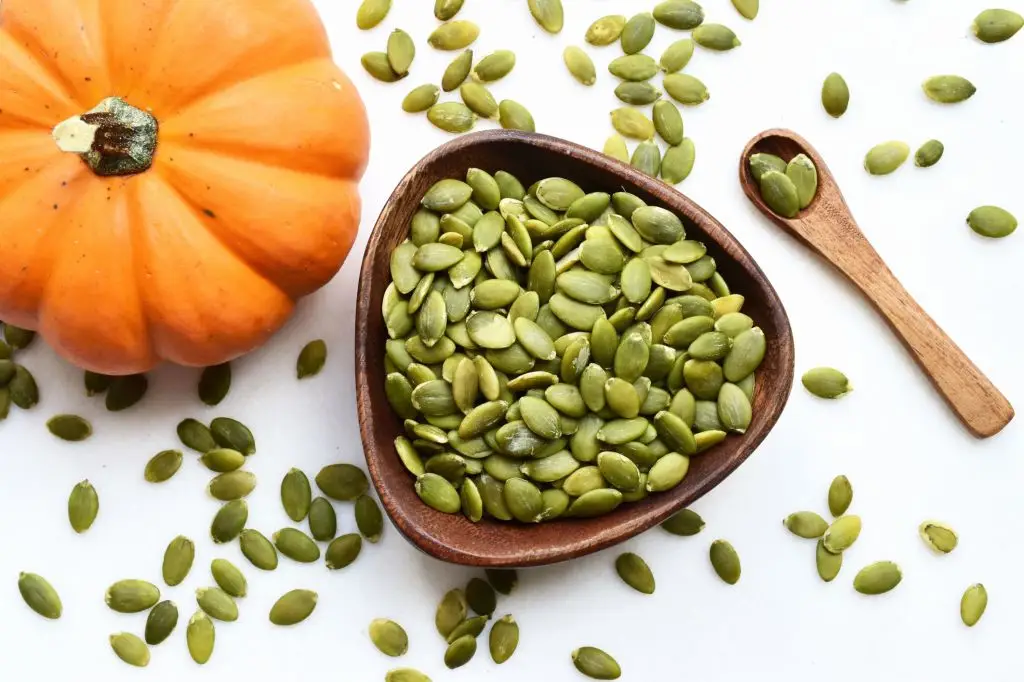
Pumpkin seeds make a flavorful, portable snack and can be adapted for different chewing preferences. Lightly roasted seeds provide a satisfying crunch, while ground seeds or seed butter deliver a smooth texture ideal for spreads and sauces. Pumpkin seeds also add minerals that support overall health and energy, which is helpful when focusing on muscle maintenance. Blend seeds into smoothies or sauces to make them easier to swallow without losing nutritional benefit. For a simple meal idea, stir ground pumpkin seeds into cooked grains or mashed beans to thicken and enrich texture. Keep small jars of shelled pumpkin seeds in the pantry for easy access, and experiment with cinnamon or savory spices to suit your taste. If chewing is difficult, look for hulled seed butters or finely ground products to preserve nutritional value without the crunch.
9. Seitan: Dense, savory protein for hearty appetites

Seitan is a wheat-based protein that often appeals to people wanting a meaty texture from plant foods. It’s concentrated and holds up well to slicing, braising, or stir-frying, which makes it useful for robust dinners. Because seitan contains gluten, it’s not suitable for those with celiac disease or gluten sensitivity, but when tolerated, it can be a reliable way to add substantial plant protein to a meal. To make seitan easier to chew, braise it slowly in a flavorful broth until tender or slice it thinly and fold into soups and stews. Pair seitan with softer sides—mashed vegetables, cooked legumes, or a gentle grain—to round out the plate and aid digestion. When buying seitan, check labels for sodium content and added ingredients; homemade versions let you control seasoning. For older adults with strong appetites and intact chewing, seitan can be a satisfying main in family-style dishes that support muscle-focused eating.
10. Nutritional Yeast: A savory topper that boosts protein and flavor
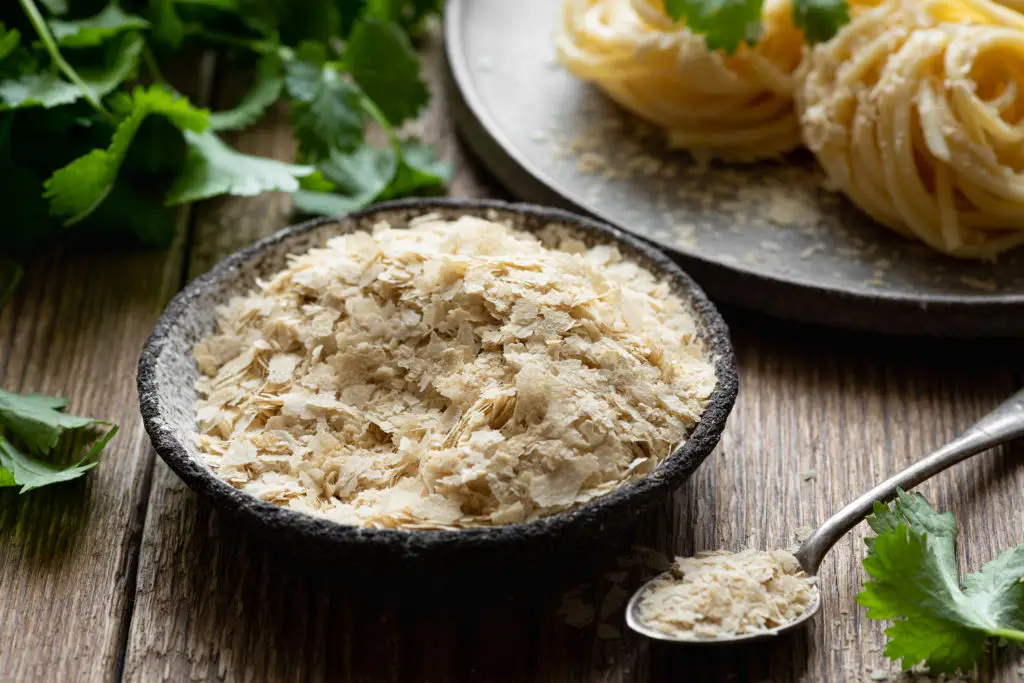
Nutritional yeast is a flaky, savory ingredient that brightens dishes while adding plant protein in small but useful amounts. It dissolves easily into liquids and is ideal for people who want extra protein without more chewing. Sprinkle it on steamed vegetables, stir it into soups, or whisk it into sauces for a creamy texture without dairy. Nutritional yeast also brings a savory, umami character that can make vegetables and grains more appealing if taste has changed with age. For softer preparations, mix nutritional yeast into mashed potatoes or blended vegetable soups so the protein and flavor are absorbed into the dish. Because it’s shelf-stable and easy to measure, nutritional yeast is a simple pantry addition that nudges daily protein totals upward in a way that’s low-effort and flexible.
11. Pea Protein Powder: A practical concentrated option

Pea protein powder is a concentrated plant-protein product made from yellow peas and often used to raise the protein content of shakes, pancakes, and soups. For older adults who find it hard to reach protein targets through food alone, a well-chosen pea protein powder can be a practical solution. Powders mix into warm or cold liquids, and using them in blended soups or soft pancake batters can help people meet needs without heavy chewing. When choosing a powder, look for products with minimal added sugars and check for fortification with vitamin B12 or iron if dietary restrictions apply. Also, rotate whole-food protein sources along with powders to preserve variety and micronutrient breadth. If you have kidney disease or other health conditions that affect protein prescriptions, discuss concentrated protein supplements with your healthcare team first. For many people, though, pea protein powder is a user-friendly tool that fills gaps between meals while keeping meal planning simple and sustainable.
Wrap-up: Small changes, steady progress for muscle health

Switching to more plant-based meals doesn’t mean giving up muscle-supporting nutrition. These 11 options offer a mix of whole foods, seeds, savory enhancers, and concentrated powders so you can pick what fits your appetite, chewing comfort, time, and budget. The goal isn’t perfection or a single magic food. Instead, aim for consistency: include a reliable protein source at each meal, vary textures to keep eating enjoyable, and combine foods—like legumes with grains—when you want a broader amino acid mix. If you’re curious about exact serving sizes, protein grams, or leucine targets, consult the USDA food database or a registered dietitian; they can help translate your personal needs into meal plans that account for medications, appetite changes, and health conditions. Start small: add hemp seeds to breakfast, swap a tofu scramble into your weekly rotation, or blend pea protein into a mid-afternoon smoothie. Over time, those changes add up to steadier muscle maintenance, better recovery from activity, and meals that taste like nourishment rather than chores. Above all, treat nutrition as one piece of a larger, gentle plan that includes movement, rest, and habits you can keep—because sustainable choices are the ones that help you feel stronger for the long run.
